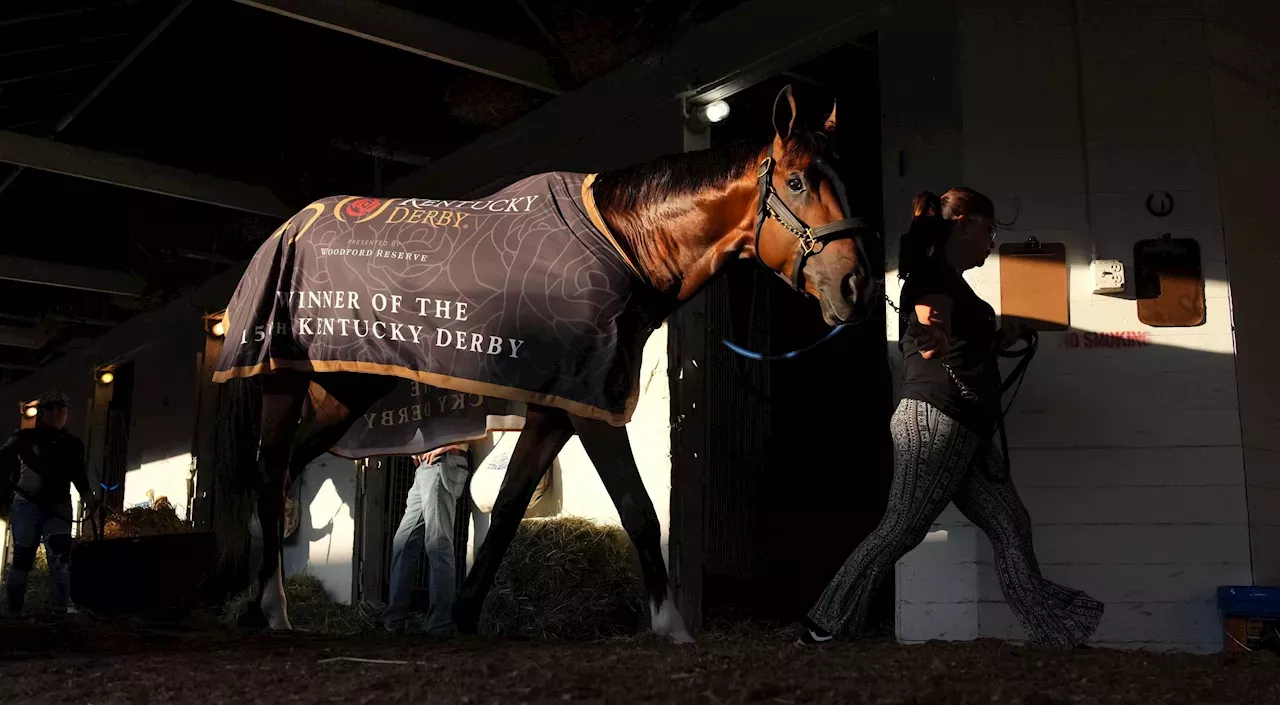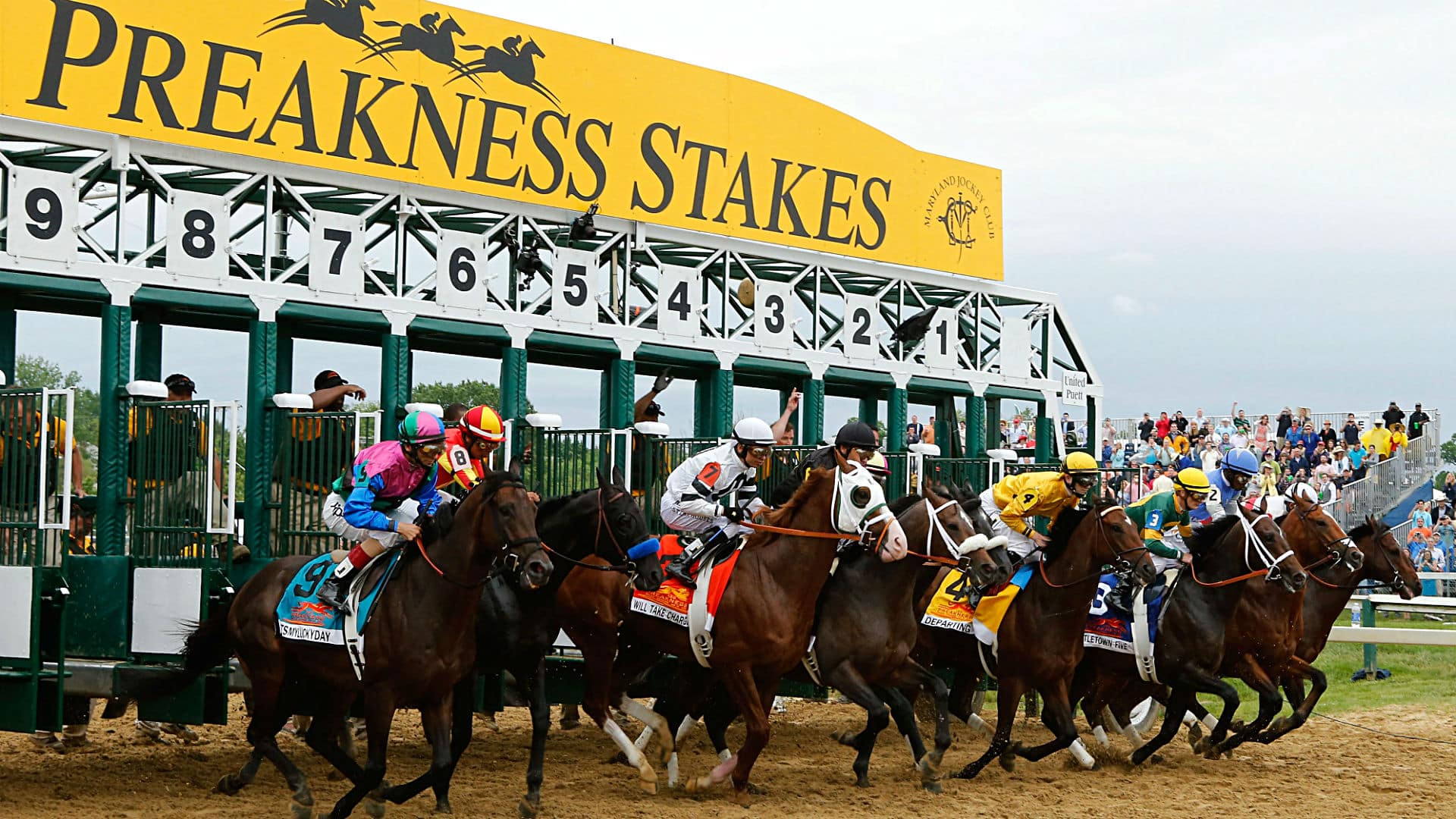Notable Preakness Horses

Preakness horses – The Preakness Stakes, a prestigious event in the Triple Crown series, has witnessed exceptional horses triumphing multiple times. These legendary steeds have left an indelible mark on the sport, showcasing their extraordinary talent and resilience.
The Preakness Stakes is a prestigious horse race held annually at Pimlico Race Course in Baltimore, Maryland. It is the second leg of the Triple Crown of Thoroughbred Racing, following the Kentucky Derby and preceding the Belmont Stakes. The Preakness Stakes is known for its challenging 1 3/16-mile distance and its talented field of horses.
In 2024, the Preakness Stakes will be held on May 19th, with the post time set for 6:45 PM EST. For more information on the Preakness 2024 post time, please visit preakness 2024 post time . The Preakness Stakes is a true test of a horse’s speed, endurance, and determination, and it is always an exciting race to watch.
Throughout history, several horses have etched their names in the annals of the Preakness Stakes by securing multiple victories. These equine athletes, guided by skilled trainers, jockeys, and owners, have demonstrated unwavering determination and athletic prowess.
The thunderous hooves of Preakness horses reverberate across the hallowed grounds, each stride carrying the weight of anticipation and dreams. As the race nears its climax, the air crackles with excitement, and every eye is fixed on the track. Amidst the fervor, savvy bettors scrutinize the preakness odds , seeking an edge in predicting the victor.
Yet, it is the horses themselves who ultimately decide the outcome, their hearts pounding in rhythm with the throbbing pulse of the crowd.
Multiple Preakness Stakes Winners
- Count Fleet (1943, 1944): Trained by Don Cameron, Count Fleet’s exceptional speed and stamina propelled him to back-to-back Preakness Stakes victories. He remains the only horse to have won the Preakness Stakes as a three-year-old and a four-year-old.
- Cigar (1995, 1996): Owned by Allen E. Paulson and trained by Bill Mott, Cigar’s unparalleled dominance saw him claim consecutive Preakness Stakes titles. His 16-race winning streak, including the 1995 Breeders’ Cup Classic, solidified his status as one of the greatest racehorses of all time.
- Rachel Alexandra (2009, 2010): Trained by Steve Asmussen, Rachel Alexandra became the first filly to win the Preakness Stakes in 85 years. Her remarkable victories, coupled with her exceptional speed and determination, cemented her place among the sport’s most celebrated female racehorses.
Pedigree and Bloodlines

The pedigree of a Preakness horse is a record of its ancestors, including their performance and achievements. Bloodlines refer to the genetic lineage of a horse, which can influence its physical characteristics, temperament, and athletic abilities.
Both pedigree and bloodlines play a crucial role in the success of Preakness horses. A horse with a strong pedigree, meaning ancestors with a history of success in racing, is more likely to inherit the traits that make for a great racehorse.
Sire and Dam Lines
The sire line refers to the paternal lineage of a horse, while the dam line refers to the maternal lineage. Both sire and dam lines can have a significant impact on a horse’s performance.
A strong sire line can provide a horse with the athleticism, speed, and stamina needed to succeed in the Preakness. Similarly, a strong dam line can provide a horse with the toughness, durability, and intelligence necessary to withstand the rigors of training and racing.
Examples of Successful Preakness Horses with Exceptional Pedigrees
- Secretariat: Secretariat’s sire, Bold Ruler, was a champion racehorse and sire. His dam, Somethingroyal, was a stakes-winning mare. Secretariat inherited the speed and stamina of his sire and the toughness and determination of his dam, resulting in his record-breaking victory in the 1973 Preakness.
- American Pharoah: American Pharoah’s sire, Pioneerof the Nile, was a Grade 1 winner. His dam, Littleprincessemma, was a stakes-winning mare. American Pharoah inherited the speed and agility of his sire and the stamina and toughness of his dam, helping him become the first Triple Crown winner in 37 years.
Training and Preparation: Preakness Horses
The path to the Preakness Stakes is paved with rigorous training and meticulous preparation. From the moment a horse is identified as a potential contender, it embarks on a carefully crafted regimen designed to optimize its performance on the grand stage.
A team of dedicated professionals, including trainers, veterinarians, and nutritionists, work in concert to ensure that each horse reaches the starting gate in peak condition.
With hooves that thunder like the gods of old, the Preakness horses gallop into the fray. Their names echo through the annals of racing history, etched in the hearts of fans and bettors alike. But amidst the fervor, a whisper of wisdom guides the astute gambler towards preakness picks . For in the realm of uncertainty, knowledge is the key to unlocking the secrets of the track.
As the Preakness horses surge forward, let their thunder be your guide, but remember to heed the counsel of the wise, for in the tapestry of racing, the picks of the experts weave a path to glory.
Training
The training regimen for Preakness horses is a symphony of intensity and precision. It typically begins with slow, controlled exercises to build a solid foundation of fitness. As the race day approaches, the intensity and duration of workouts increase, pushing the horses to their limits while carefully monitoring their progress to prevent injuries.
Veterinary Care
Veterinarians play a crucial role in the well-being of Preakness horses. They conduct regular checkups, administer vaccinations, and treat any ailments that may arise. Their expertise ensures that the horses remain healthy and free from injuries that could jeopardize their chances of success.
Nutrition
Proper nutrition is paramount for Preakness horses. A carefully balanced diet provides the energy and nutrients they need to sustain their rigorous training and recover from workouts. Feed rations are tailored to each horse’s individual needs, ensuring they receive the optimal balance of carbohydrates, proteins, fats, vitamins, and minerals.
Rest
Adequate rest is essential for Preakness horses to recover from their demanding training and rebuild their energy reserves. They are typically given several hours of rest each day, during which they can graze, socialize, and relax.
Handicapping and Betting
Mastering the art of handicapping and betting on the Preakness Stakes requires a keen eye for detail and a comprehensive understanding of various factors that influence the outcome of the race. By carefully analyzing the horses’ form, track conditions, and jockey history, you can increase your chances of placing successful bets and minimizing risk.
Before delving into specific handicapping strategies, it’s essential to understand the basics of betting on horse races. The most common type of bet is the win bet, where you wager on a horse to finish first. Other popular bets include place bets (horse finishes first or second), show bets (horse finishes first, second, or third), and exacta bets (horse finishes first and second in the exact order).
Form Analysis
One of the most important factors to consider when handicapping the Preakness Stakes is the form of each horse. Form refers to a horse’s recent performance in races. A horse that has been consistently running well in stakes races is more likely to perform well in the Preakness than a horse that has been struggling.
When analyzing a horse’s form, pay attention to the following factors:
- Recent results: Look at the horse’s last few races to see how it has been performing.
- Class of competition: Consider the level of competition the horse has been facing. Has it been running against top-class horses or has it been competing in weaker races?
- Running style: Some horses are front-runners, while others are closers. Pay attention to the horse’s running style and how it matches up with the track conditions.
Track Conditions
The condition of the track can also have a significant impact on the outcome of the Preakness Stakes. A fast track favors horses with speed, while a wet track can slow down the race and make it more difficult for horses to close from behind.
When handicapping the Preakness, be sure to consider the following track conditions:
- Surface: The Preakness is run on a dirt track. Different horses perform better on different surfaces, so it’s important to consider the horse’s surface preferences.
- Weather: The weather can also affect the track conditions. Rain can make the track wet and muddy, while heat can make the track dry and fast.
Jockey History
The jockey is another important factor to consider when handicapping the Preakness Stakes. A good jockey can make a big difference in the outcome of a race. Look for jockeys who have a good record of success in stakes races and who are familiar with the Preakness Stakes course.
When evaluating a jockey’s history, pay attention to the following factors:
- Win percentage: Look at the jockey’s overall win percentage to get a sense of their overall success rate.
- Stakes race experience: Consider the jockey’s experience in stakes races. Have they won any major stakes races?
- Course experience: Has the jockey ridden in the Preakness Stakes before? If so, what was their record?
Cultural Impact
The Preakness Stakes holds a prominent place in American culture, transcending its sporting significance to become a beloved tradition and a source of national pride. Its rich history, captivating races, and vibrant festivities have left an enduring mark on the nation’s social fabric.
Traditions and Festivities
The Preakness Stakes is synonymous with tradition and spectacle. The race’s signature drink, the Black-Eyed Susan cocktail, is a symbol of the event and a popular beverage among racegoers. The infield, known as “The InfieldFest,” transforms into a vibrant party zone, complete with live music, food vendors, and a carnival-like atmosphere. The Preakness Parade, held annually before the race, showcases elaborate floats and marching bands, drawing thousands of spectators along its route.
Art and Literature
The Preakness Stakes has inspired countless works of art and literature. Painters have captured the beauty and excitement of the race on canvas, while writers have penned novels, poems, and songs that evoke its drama and significance. The Preakness has also featured prominently in films and television shows, further solidifying its place in American popular culture.
Symbolism and Legacy
Beyond its entertainment value, the Preakness Stakes has become a symbol of American resilience and perseverance. The race’s motto, “The Run for the Black-Eyed Susans,” represents the pursuit of excellence and the enduring spirit of competition. The Preakness Trophy, awarded to the winning horse, is a coveted symbol of sporting achievement and a testament to the skill and dedication of the horses and jockeys involved.
The Preakness Stakes continues to captivate audiences year after year, solidifying its place as a cherished American tradition and a source of national pride. Its cultural impact extends far beyond the racetrack, shaping art, literature, and the nation’s social fabric.